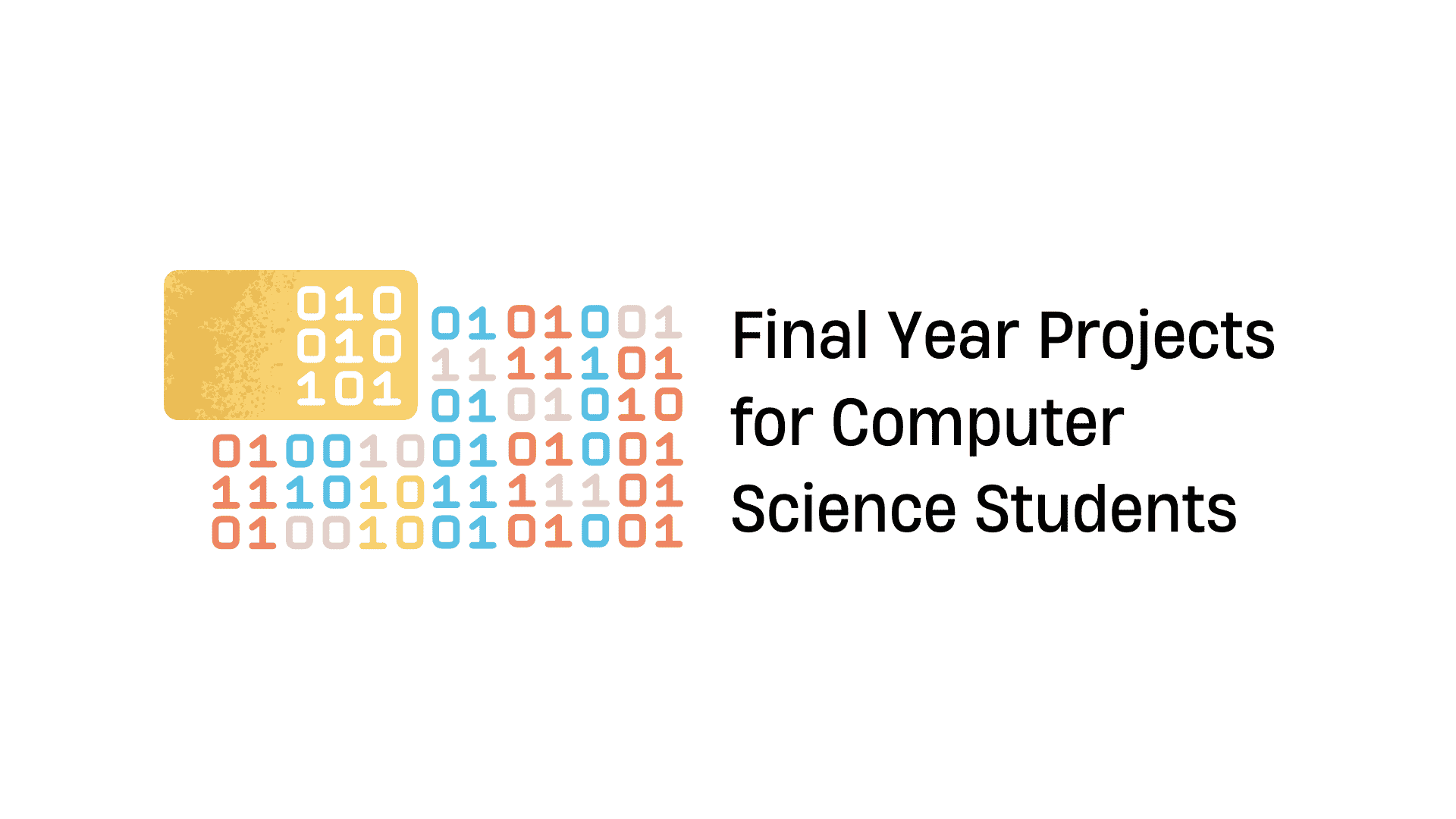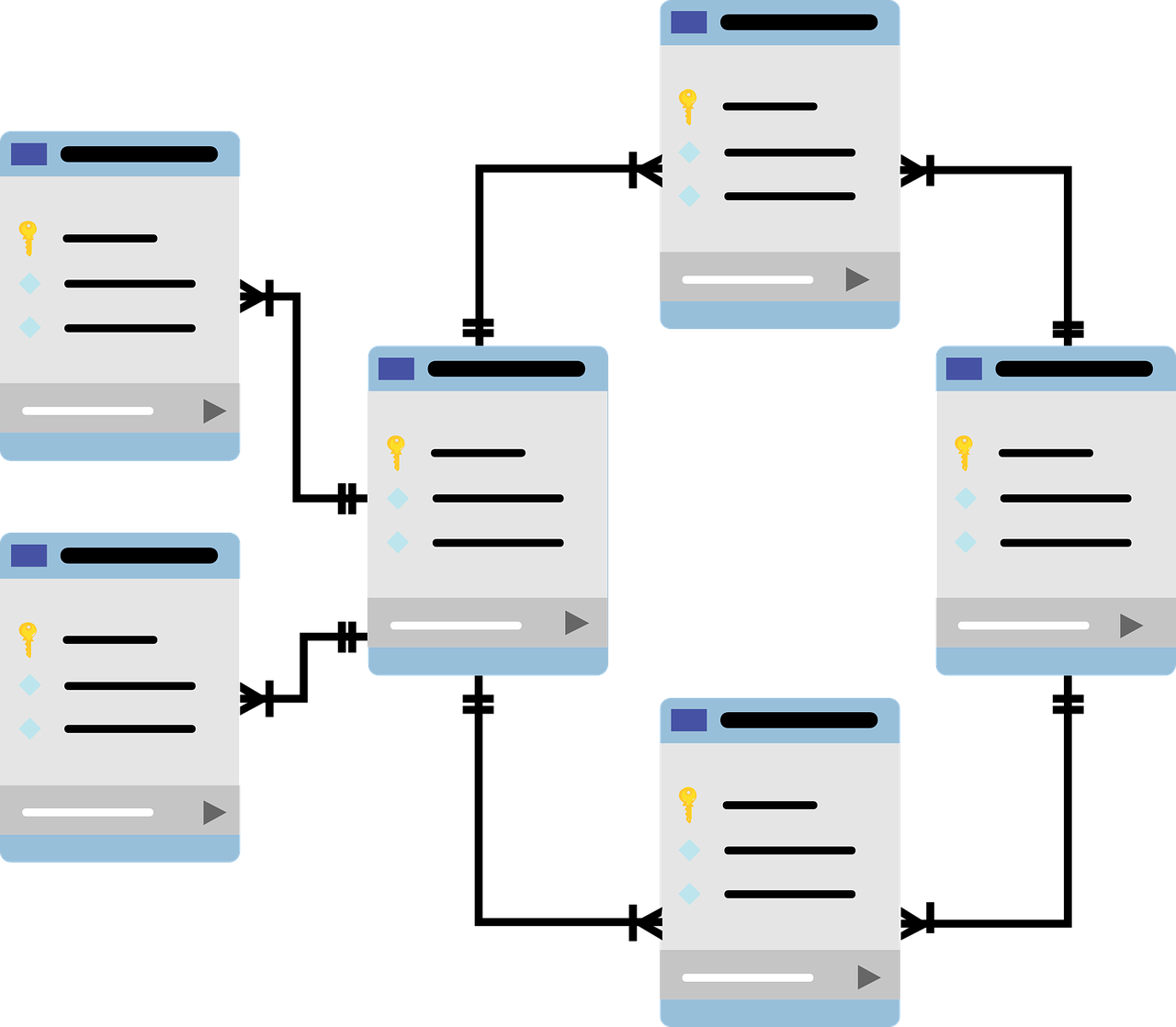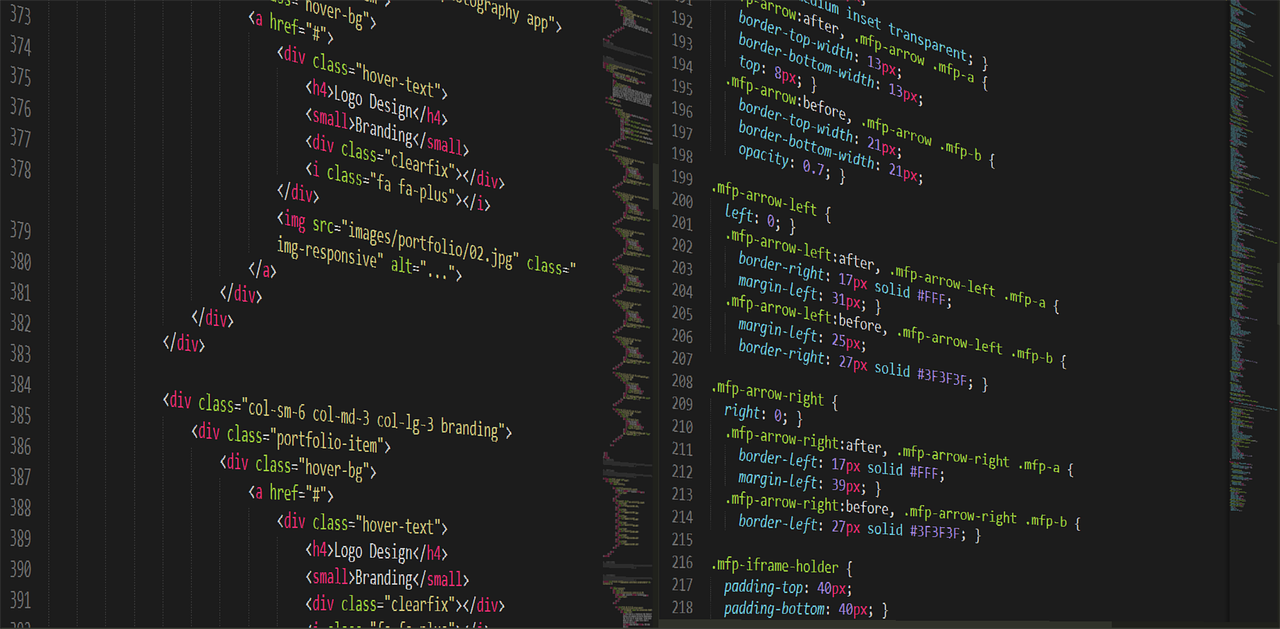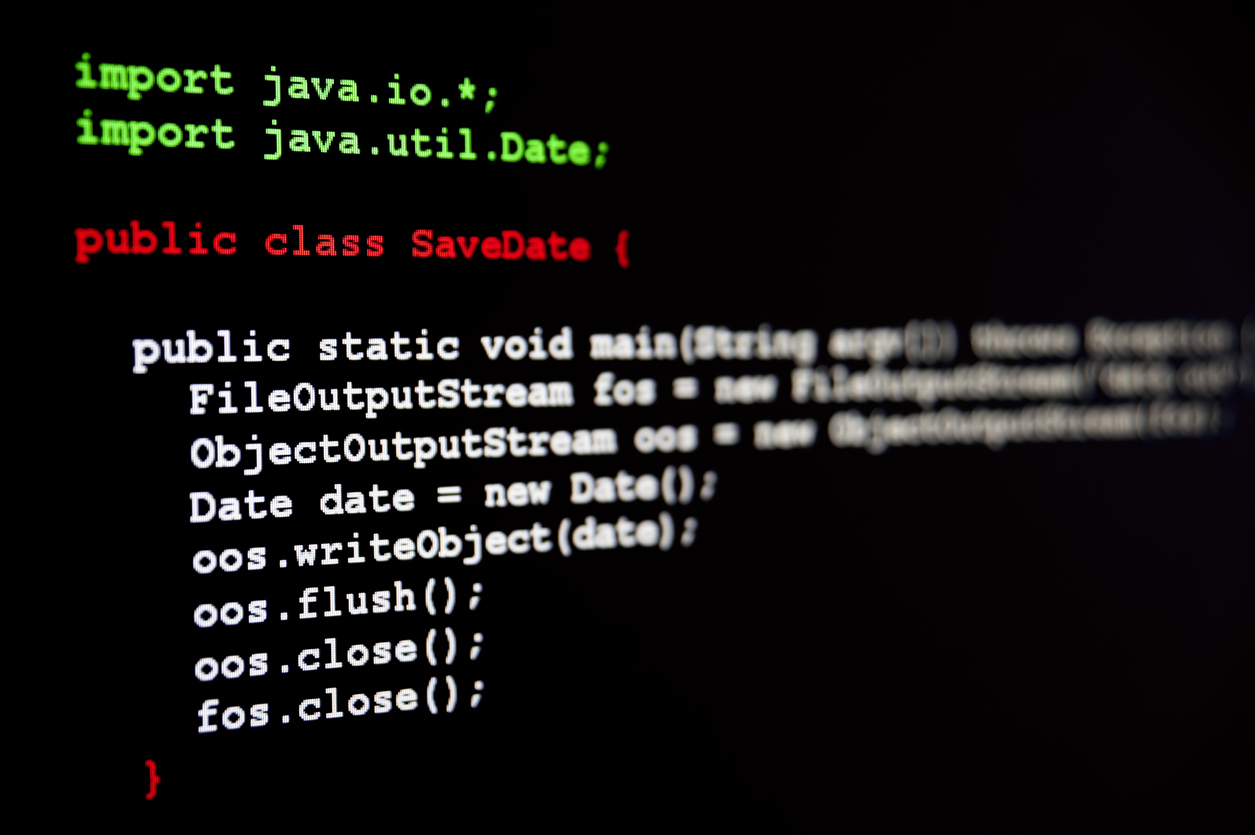Struggling to decide on a final year project that can highlight your strengths as a computer science student?
The right project can be pivotal in showcasing your skills and setting the stage for a successful career.
This blog will cover some of the best computer science projects for final year students.
Whether you’re just starting with Python projects for beginners, keen on developing robust Java applications, or interested in the cutting-edge field of computer vision, you’ll find a project that aligns with your interests and career goals.
Let’s dive in
How Do You Choose A Final-Year Project?
Choosing a final-year project in computer science can be challenging, but with the right approach, it can be an exciting opportunity to showcase your skills and interests.
Here are some key factors to consider when selecting computer science projects for the final year:
- Interest and Passion
Select a topic that genuinely interests you. Working on something you’re passionate about will keep you motivated throughout the project.
- Relevance To Career Goals
Choose a project that aligns with your future career aspirations. This can provide practical experience and make your resume stand out to potential employers.
- Complexity and Feasibility
Ensure the project is challenging enough to demonstrate your abilities and feasible within the given time frame and available resources.
- Skills and Knowledge
Consider your existing skills and the technologies you’re comfortable with. If you’re a beginner in Python, look for projects that allow you to gradually build and expand your knowledge.
- Python Projects for Beginners
Projects like developing a simple web scraper, creating a basic chatbot, or building a personal finance tracker can be excellent choices.
- Technology Stack
Decide on the technologies you want to work with. If you are strongly interested in Java, look for projects that utilize this language.
- Java Projects
Developing an e-commerce platform, creating a library management system, or building a weather forecasting application can be good options for showcasing your Java skills.
- Innovation and Impact
Aim for a project that solves a real-world problem or brings something new. Innovative projects can significantly impress your professors and potential employers.
- Computer Vision Projects
Projects like developing an image recognition system, creating an autonomous vehicle simulation, or building a facial recognition system can demonstrate your ability to work with advanced technologies.
- Guidance and Resources
Ensure you have access to adequate guidance from professors or mentors and the necessary resources to complete your project successfully.
- Innovative Project Considerations
When considering innovative project ideas, it’s essential to delve deeper into the specifics of the problem and the impact of your solution. Ask yourself:
- What problem is my project attempting to solve?
- Why is it necessary to solve this issue?
- Is the knowledge and technology applicable today and in the future 5-10 years?
By considering these factors, you can choose among the different Final year projects for computer science that highlight your strengths and interests and set the stage for a successful career in computer science.
Best Final Year Projects for Computer Science Engineers:
1. Crime Rate Prediction
Why Work on This Project?
A crime rate prediction project helps you explore data science techniques, machine learning algorithms, and statistical analysis. It’s an impactful project that can assist law enforcement agencies in resource planning and crime prevention strategies.
How to Create It
- Set Up: Use Python and relevant libraries, such as Pandas for data manipulation, Scikit-learn for machine learning, and Matplotlib or Seaborn for data visualization.
- Data Collection: Gather historical crime data from public databases or law enforcement agencies.
- Data Preprocessing: Clean and preprocess the data, handling missing values and normalizing data features.
- Model Development: Implement machine learning algorithms, such as linear regression, decision trees, or neural networks, to predict crime rates.
- Evaluation: Evaluate the model using accuracy, precision, and recall metrics to ensure its reliability.
What to Show
- Demonstrate the data preprocessing steps, highlighting how you cleaned and prepared the data.
- Show the model training process and explain the chosen algorithm.
- Present the prediction results and visualize them using graphs or maps to indicate high-risk areas.
Uncover the depths of data insights with our Post-Graduate Program in Data Science and Business Analytics, designed to empower you with the skills needed to thrive in today’s data-driven world.
Why choose us?
- Learn anytime, anywhere
- Weekly online mentorship by experts
- Dedicated Program Support
- Exclusive access to the Great Learning job board
2. Personal Finance Tracker
Why Work on This Project?
Creating a personal finance tracker is a practical and useful project that addresses a common need and falls under some of the best final year project ideas for computer science.
It allows you to demonstrate your ability to work with data management and user interfaces, which are valuable skills in many tech roles.
How to Create It
- Set Up: Start by setting up a Python environment with necessary libraries such as pandas for data manipulation, Tkinter for the GUI, and Matplotlib for visualization.
- Design the Interface: Use Tkinter to create a user-friendly interface where users can input their income and expenses.
- Database Integration: Use SQLite to store financial data securely.
- Visualization: Implement graphs and charts using Matplotlib to help users visualize their spending patterns.
What To Show
- Demonstrate the user interface and how users can input and manage their financial data.
- Show the data storage and retrieval functionality.
- Present the financial data visualization, highlighting trends and patterns.
3. E-commerce Platform
Why Work on This Project?
Developing an e-commerce platform is a comprehensive project that covers various aspects of software development, including database management, server-side programming, and front-end development. Given the growing importance of online retail, it’s a highly relevant project.
How To Create It
- Design the System: Outline the architecture, including user management, product catalog, shopping cart, and order processing.
- Set Up: Use Java for server-side programming and integrate with a database like MySQL for data storage.
- Features To Develop: Implement user registration, product browsing, adding to cart, and checkout functionality.
- Front-End: Use HTML, CSS, and JavaScript to create a responsive and user-friendly interface.
What To Show
- Demonstrate user registration and login features.
- Show product browsing, searching, and shopping cart functionalities.
- Present the checkout process and order management system.
4. Library Management System
Why Work On This Project?
Developing a library management system helps you learn about database management, CRUD operations (Create, Read, Update, Delete), and user interface design. It’s a practical application that can be used in educational institutions and public libraries.
How To Create It
- Set Up: Use Java for the core application logic and JDBC (Java Database Connectivity) to interact with a relational database like MySQL.
- Design The System: Plan the architecture, including modules for user management, book catalog, borrowing and returning books, and search functionality.
- Features To Develop: Implement user login, book issue and return tracking, and fine calculation for overdue books.
- User Interface: Create a GUI using Java Swing or JavaFX for a user-friendly interface.
What to Show
- Demonstrate the user login and registration process.
- Show how to search for books, issue and return them, and track user borrowing history.
- Present the fine calculation system and explain how the System handles overdue books.
5. Image Recognition and Classification
Why Work on This Project?
An image recognition and classification project immerses you in the exciting field of computer vision, allowing you to apply machine learning techniques to analyze visual data.
This project is highly relevant for industries like healthcare, security, and e-commerce, where image analysis is crucial.
How To Create It
- Set Up: Use Python along with libraries such as TensorFlow or PyTorch to build and train deep learning models and OpenCV for image processing tasks.
- Data Collection: Utilize well-known datasets like CIFAR-10, MNIST, or ImageNet, or collect your dataset relevant to your project.
- Data Preprocessing: Preprocess images by resizing, normalizing, and augmenting the data to enhance the model’s generalization ability. Techniques like rotation, flipping, and scaling can be used.
- Model Development: Develop a convolutional neural network (CNN) tailored for image classification tasks. Structure your network with multiple convolutional, pooling, and fully connected layers.
- Training and Evaluation: Train your model using the dataset and validate its performance. Fine-tune the model by adjusting hyperparameters to achieve optimal results. Use metrics such as accuracy, precision, recall, and the confusion matrix to evaluate performance.
What To Show
- Demonstrate the data preprocessing steps, including how images are augmented to improve model robustness.
- Show the architecture of the CNN model, explaining how each layer contributes to the image recognition process.
- Present the classification results with visual examples, showcasing the model’s accuracy and other performance metrics. Use confusion matrices and example images to illustrate the model’s strengths and areas for improvement.
Explore the PGP in Artificial Intelligence & Machine Learning and embark on a transformative learning journey that shapes your future in AI and ML.
Why choose us?
- Learn anytime, anywhere
- Weekly online mentorship by experts
- Dedicated Program Support
- Exclusive access to the Great Learning job board
6. Web Development: Online Auction System
Why Work On This Project?
An online auction system introduces you to web development, user authentication, real-time bidding, and payment integration. This project is relevant in today’s e-commerce-driven world and showcases full-stack development skills.
How To Create It
- Set Up: Use technologies like HTML, CSS, and JavaScript for the front end and a back-end framework like Node.js or Django. Use a database like MongoDB or MySQL.
- Design The System: Plan modules for user registration, auction creation, bidding process, and payment gateway integration.
- Features To Develop: Implement user profiles, auction listings, real-time bid updates using WebSockets, and secure payment processing.
- Front-End: Ensure a responsive and user-friendly interface for a seamless user experience.
What To Show
- Demonstrate user registration and profile management.
- Show auction creation, listing of items, and real-time bidding process.
- Present the payment integration and how users can complete transactions securely.
7. Security: E-Authentication System
Why Work On This Project?
An e-authentication system is vital for securing digital identities and ensuring only authorized users can access sensitive information.
This project helps you understand crucial security concepts like encryption, authentication protocols, and secure data handling, making you proficient in developing robust security measures for any application.
How To Create It
- Set Up: Use a language like Python or Java to develop the authentication logic. Integrate with a database such as MySQL or PostgreSQL to store user credentials securely.
- Design the System: Plan components for user registration, login, password management, and multi-factor authentication (MFA).
- Features To Develop:
- User Registration: Implement secure user registration with password hashing using libraries like bcrypt.
- Login Process: Develop a secure login system that validates credentials and incorporates MFA.
- MFA: Implement multi-factor authentication using SMS, email OTPs, or authentication apps.
- Password Management: Enable secure password recovery and change functionalities.
- Security Measures: Implement additional security measures, such as CAPTCHA, to prevent bots, account lockout after multiple failed attempts, and audit logging to monitor suspicious activities.
What To Show
- Demonstrate the user registration process with secure password storage using hashing techniques.
- Show the secure login process, including the multi-factor authentication step.
- Present the password recovery process and other security measures such as CAPTCHA and account lockout features.
- Highlight the audit logging system and how it helps monitor and track login attempts and suspicious activities.
8. Web Scraper For Data Extraction
Why Work on This Project?
A web scraper project showcases your ability to gather and process data from the web, which is essential for data analysis and machine learning applications. This project also teaches you about web technologies and handling large datasets.
How To Create It
- Set Up: Install Python libraries like BeautifulSoup for parsing HTML, Requests for making HTTP requests, and Pandas for data storage and manipulation.
- Define Targets: Choose the websites from which you want to scrape data and identify the specific elements to extract.
- Implement Scraper: Write Python scripts to fetch web pages and extract the necessary data.
- Store Data: Use Pandas to clean and store the scraped data in a structured format.
What To Show
- Explain the target websites and the type of data being extracted.
- Demonstrate the scraping process and the extracted data.
- Showcase how the data is cleaned, stored, and possibly visualized.
Learn more about Data Extraction and beyond with our Post-Graduate Program in Data Science and Business Analytics.
- Learn anytime, anywhere
- Weekly online mentorship by experts
- Dedicated Program Support
- Exclusive access to the Great Learning job board
9. Web Development: Online Learning Platform
Why Work on This Project?
Developing an online learning platform allows you to explore full-stack web development, encompassing front-end, back-end, and database management.
Given the growing demand for e-learning solutions, this project is highly relevant and can significantly enhance your portfolio by showcasing your ability to build comprehensive web applications.
How To Create It
- Set Up: For the front end, use technologies like HTML, CSS, and JavaScript. For the back end, use a framework like Django (Python) or Node.js. Store course materials and user data in a database like MySQL or MongoDB.
- Design the System: Plan components, including user registration and authentication, course creation and management, content delivery (videos, PDFs), and assessment tools (quizzes, assignments).
- Features To Develop:
- User Management: Implement registration, login, and profile management.
- Course Management: Allow instructors to create and manage courses, including uploading materials and organizing content.
- Content Delivery: Develop a responsive interface for students to access course materials, view videos, and download resources.
- Assessment Tools: Create features for quizzes and assignments, allowing students to take tests, submit work, and have instructors grade it.
What to Show
- Demonstrate the user registration and authentication process.
- Show the course creation and management interface for instructors.
- Present the content delivery system, highlighting how students access and interact with course materials.
- Showcase the assessment tools, including quiz functionality and assignment submissions.
This comprehensive list of projects for computer science students provides a range of practical and engaging topics that not only enhance technical skills but also offer hands-on experience to the students, contributing to their holistic development as competent and confident professionals in the ever-evolving landscape of technology.
How To Include Projects In Your Resume?
1. Create a Dedicated Section:
- Title the section “Projects” or “Relevant Projects.”
- Place it in a prominent position on your resume, ideally after your work experience and education sections.
2. Choose Relevant Projects:
- Select projects that are most relevant to the job you are applying for.
- Focus on projects that showcase skills and technologies mentioned in the job description.
3. Provide Project Details
- Title: Clearly state the name of the project.
- Role: Mention your specific role (e.g., Lead Developer, Project Manager).
- Duration: Indicate the time frame during which the project was completed.
- Description: Briefly summarize the project, focusing on its goals and outcomes.
4. Highlight Technologies Used
- List the technologies, programming languages, and tools you used (e.g., Python, TensorFlow, Django, MySQL).
5. Showcase Achievements and Impact
- Quantify your contributions and the project’s success where possible (e.g., “Developed an e-commerce platform that increased sales by 20%”).
- Highlight any significant challenges you overcame and innovative solutions you implemented.
6. Use Bullet Points:
- Structure the information in concise bullet points for readability.
- Each bullet point should focus on a different aspect of the project (e.g., objectives, technologies, outcomes).
Example Format:
Project 1- Crime Rate Prediction
- Role: Lead Data Scientist
- Duration: January 2024 – Feb 2024
- Description: Developed a machine learning model to predict crime rates in urban areas using historical data and socio-economic indicators.
- Technologies Used: Python, Pandas, Scikit-learn, Matplotlib
- Achievements: Improved prediction accuracy by 15% compared to existing models. The project received recognition at the university’s annual tech symposium.
Project 2- Library Management System
- Role: Java Developer
- Duration: September 2023 – December 2023
- Description: Created a comprehensive library management system for book cataloging, user management, and loan tracking.
- Technologies Used: Java, MySQL, JavaFX
- Achievements: Successfully deployed the System in the university library, reducing book processing time by 30%.
Using this structured approach, including projects in your resume, can effectively demonstrate your hands-on experience and technical expertise to potential employers.
Conclusion
Choosing the right final year project is crucial for computer science students to showcase their skills and stand out in the job market.
Final year projects for computer science students, like crime rate prediction, library management systems, and image recognition, demonstrate technical prowess and practical application.
To further enhance your resume, consider enrolling in the Great Learning Post Graduate Program in Data Science and Business Analytics or the AI and Machine Learning course.
These programs, offering flexible learning options and weekly online mentorship, prepare you for the hottest jobs with high-paying packages.
You’ll also gain exclusive access to the Great Learning job board and live career mentorship from industry experts, making you well-equipped to land top roles in the tech industry.
FAQs
Effective project management involves setting clear goals, breaking the project into manageable tasks, and creating a detailed timeline. Utilize project management tools like Trello or Asana to track progress. Regularly review your milestones and adjust plans as needed to stay on track.
Adequate documentation includes
– A clear and concise project overview.
– Detailed descriptions of the architecture and components.
– Well-commented code.
– Diagrams, flowcharts, and user manuals can help others understand the project quickly.
To generate professional documentation, use tools like Javadoc for Java or Sphinx for Python.
Integrating open-source tools and libraries can save development time and provide robust, well-tested code access.
It also allows you to leverage community support and contributions. Ensure you adhere to licensing requirements and contribute to the community if possible.
UX design is crucial as it directly affects user satisfaction and engagement. To improve UX, conduct user research to understand the needs and preferences of your target audience. Implement user-friendly interfaces, ensure responsiveness, and gather feedback through usability testing to refine the user experience continuously.









